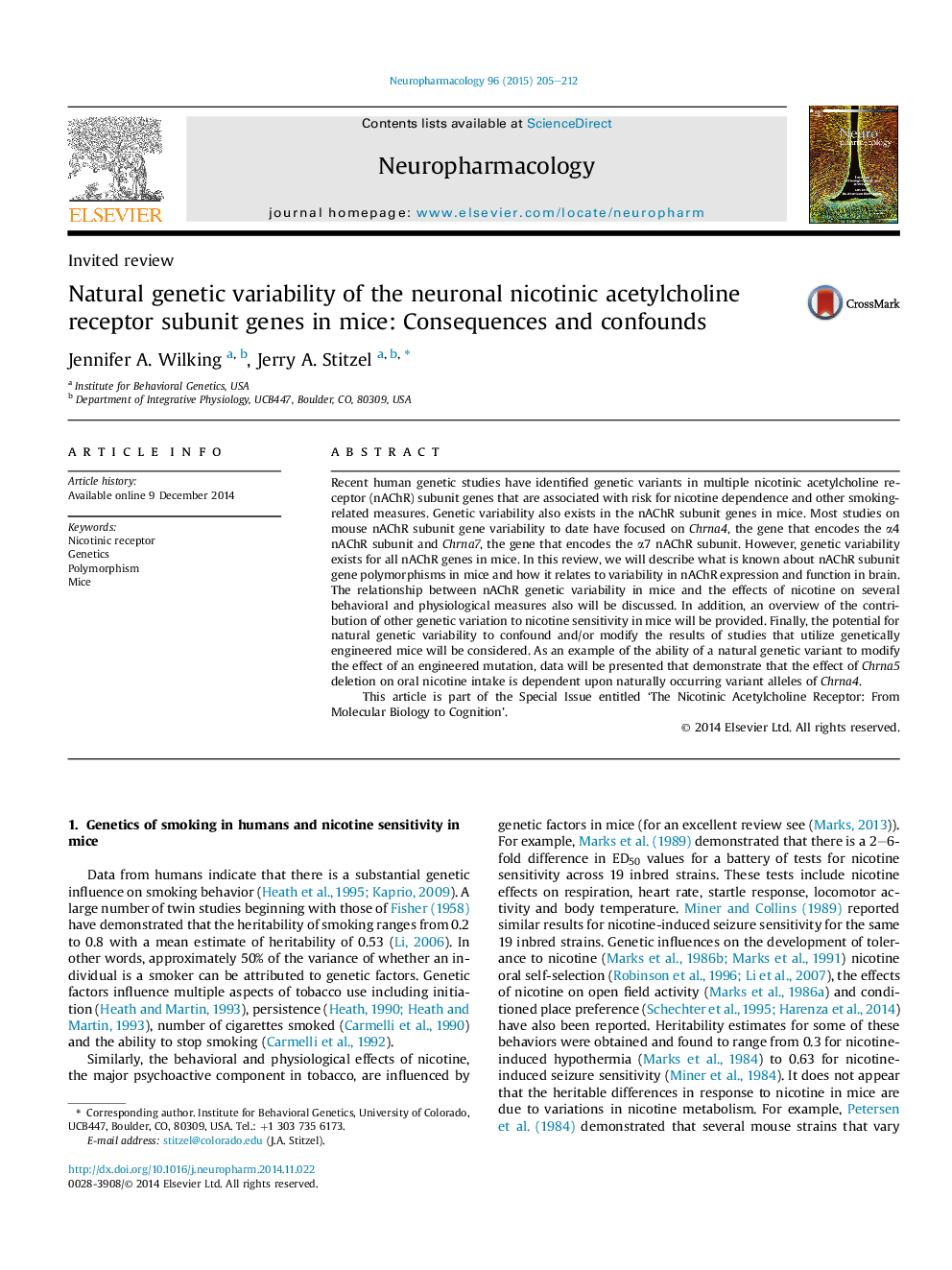| Article ID | Journal | Published Year | Pages | File Type |
|---|---|---|---|---|
| 2493156 | Neuropharmacology | 2015 | 8 Pages |
•Polymorphisms exist for all nicotinic receptor subunit genes in mice.•Chrna4, Chrna5, Chrna6 and Chrna7 variants are linked to nicotine sensitivity in mice.•Functional effects of polymorphisms in Chrna4 and Chrna7 have been identified.•Genetic variability in other unidentified genes alters nicotine sensitivity in mice.•Natural genetic variability can confound or modify the effect of engineered mutations.
Recent human genetic studies have identified genetic variants in multiple nicotinic acetylcholine receptor (nAChR) subunit genes that are associated with risk for nicotine dependence and other smoking-related measures. Genetic variability also exists in the nAChR subunit genes in mice. Most studies on mouse nAChR subunit gene variability to date have focused on Chrna4, the gene that encodes the α4 nAChR subunit and Chrna7, the gene that encodes the α7 nAChR subunit. However, genetic variability exists for all nAChR genes in mice. In this review, we will describe what is known about nAChR subunit gene polymorphisms in mice and how it relates to variability in nAChR expression and function in brain. The relationship between nAChR genetic variability in mice and the effects of nicotine on several behavioral and physiological measures also will be discussed. In addition, an overview of the contribution of other genetic variation to nicotine sensitivity in mice will be provided. Finally, the potential for natural genetic variability to confound and/or modify the results of studies that utilize genetically engineered mice will be considered. As an example of the ability of a natural genetic variant to modify the effect of an engineered mutation, data will be presented that demonstrate that the effect of Chrna5 deletion on oral nicotine intake is dependent upon naturally occurring variant alleles of Chrna4.This article is part of the Special Issue entitled ‘The Nicotinic Acetylcholine Receptor: From Molecular Biology to Cognition’.
